Kimchi rice is, in my humble opinion, one of the tastiest and easiest weeknight dinners that also has the added bonus of being a great fridge and freezer cleanout meal. I make various iterations of the below recipe – sometimes with frozen mixed stir fry veggies from Costco, other times with fresh cabbage, carrots, broccoli, and the like, or, like this version, with heaps of frozen Napa cabbage that I unearthed from the depths of the chest freezer. Also, I am usually guilty of having randomly half-full jars and bags of kimchi taking up valuable fridge real estate, making this a wonderful way to use those up.
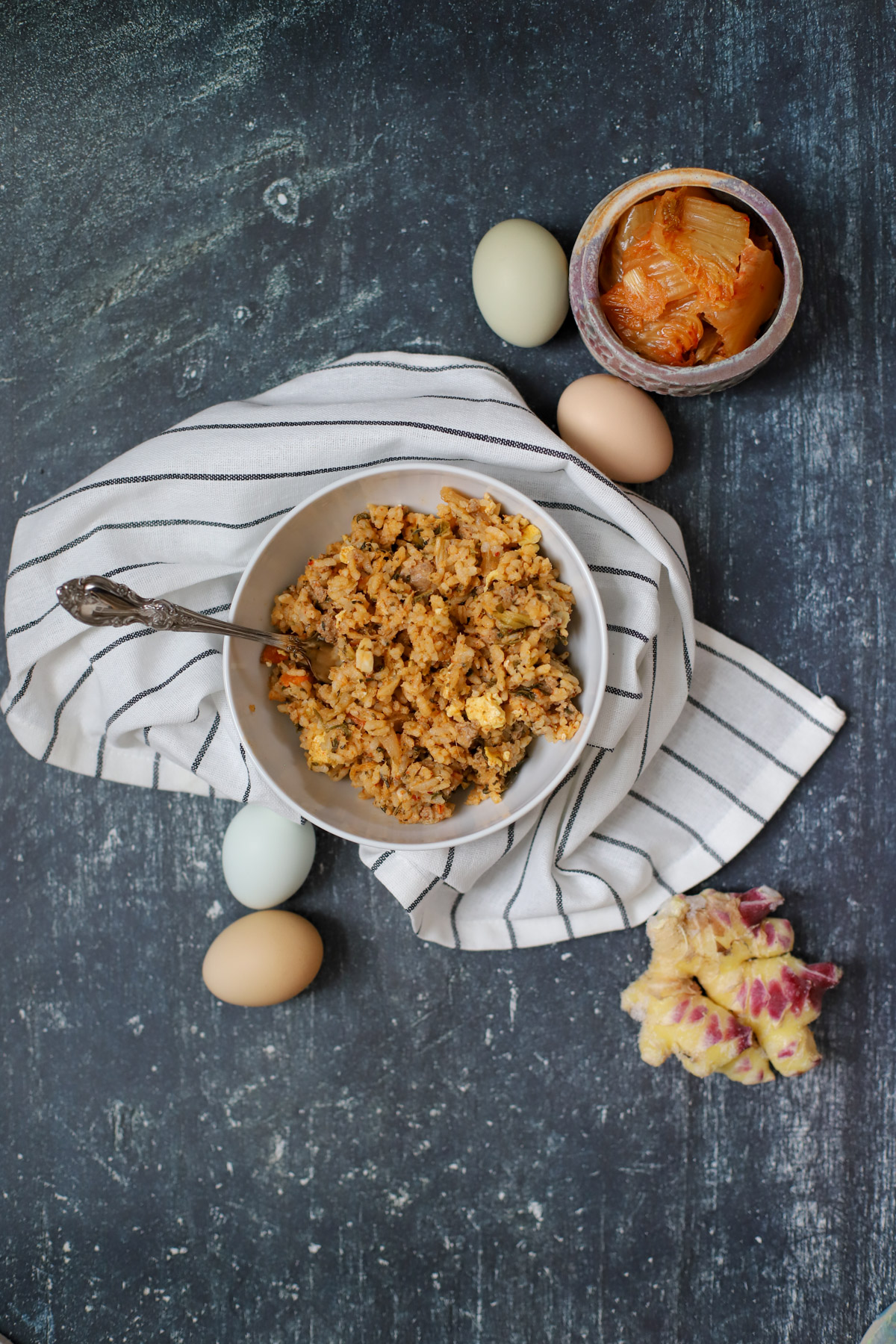
In the spirit of transparency and full disclosure, please know that I usually make this with fresh cabbage, but I did some chest freezer diving and found some cabbage that was freezer burned and most certainly not blanched when I froze it. I harvested a few heads of Napa cabbage last summer and in a fit of overwhelm, did what I usually do with a bumper crop of veggies: stashed it in the freezer for Future Amy. Well, Past Amy came in clutch because I was craving kimchi rice and got to put homegrown (and frozen!) cabbage, garlic, and ginger to use in this recipe. Couple that with the backyard chicken eggs, and, as Gen Z would say, it’s giving prairie wife!
FAQ:
Can I use frozen veggies?
Yes! Just know they might give off excess water as they cook up, so you’ll need to either strain some water off or wait a few minutes for the water to evaporate.
I don’t have a wok, can I still make this?
Yes of course, just use a large skillet! Although I adore my wok and have had it for 12 years now – it’s a kitchen staple, IMHO.
Can I use other veggies besides cabbage?
Absolutely. Like I said, this is a great fridge and freezer cleanout meal. I think most veggies work in this, and have made versions with kale, edamame, shredded carrots, broccoli, spinach, frozen veggies, fresh veggies. Use what you have! A recipe is never set in stone (unless it’s baking, because science) and I always take them as more of a jumping off point to adjust as you see fit.
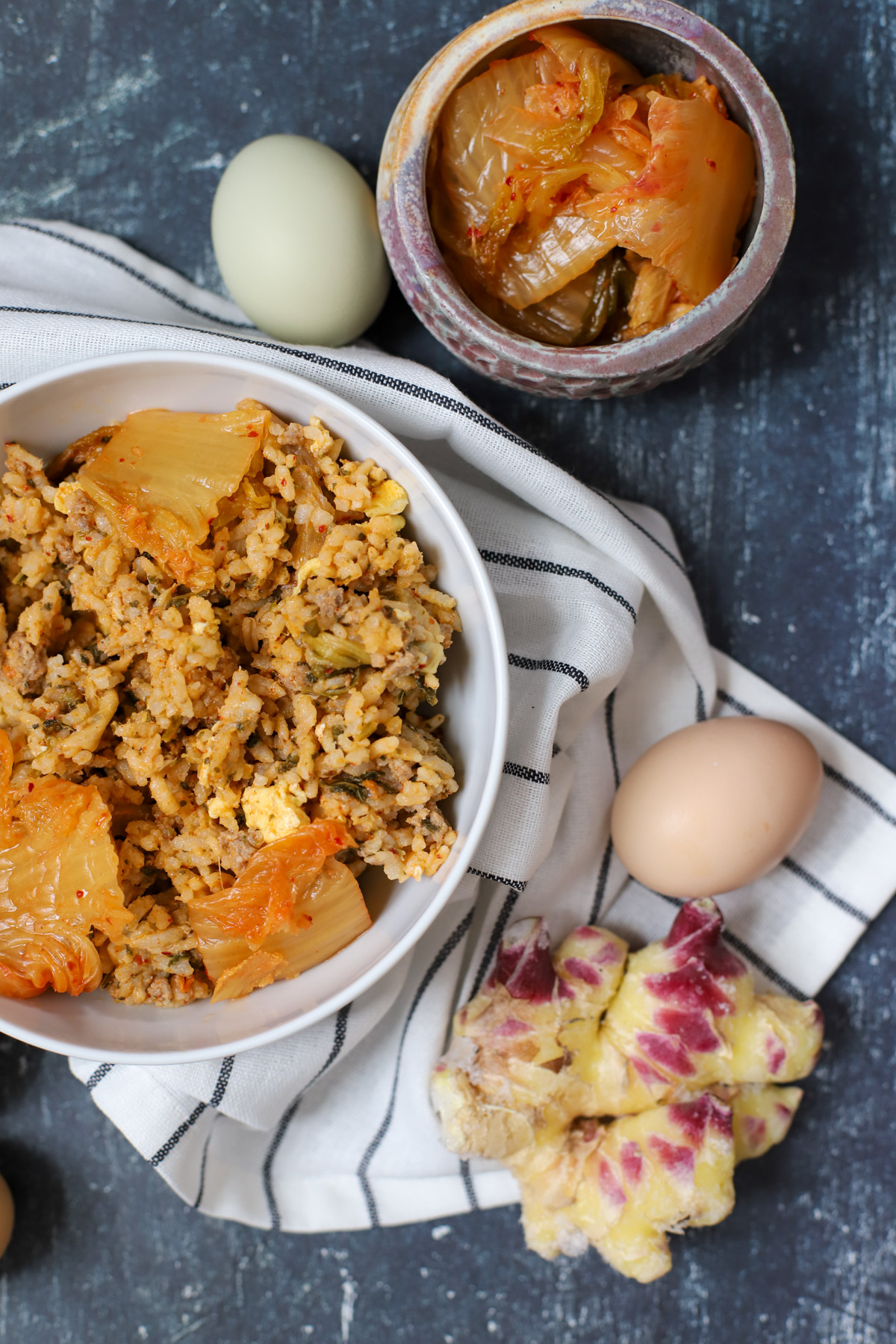
📖 Recipe
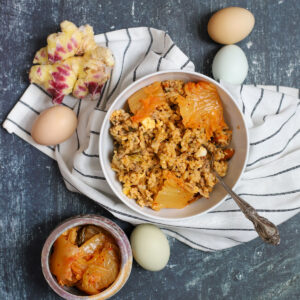
Kimchi Rice with Pork and Cabbage
Ingredients
- 4 cups cooked white or brown rice
- 1 lb ground pork thawed if frozen
- Salt and pepper
- 4 garlic cloves peeled and grated
- 1- inch piece fresh ginger grated (you can leave ginger skin on, it’s fine!)
- 4 cups thinly sliced Napa cabbage or green, or bok choy, or whatever you have
- 1 cup chopped kimchi
- 2 tablespoons kimchi juice
- 1 tablespoon rice vinegar
- 2 tablespoons soy sauce or liquid aminos
- 2 tablespoons sesame oil
- 4 large eggs
Instructions
- Before you get started, you may choose to scramble eggs and set aside if you don't want to handle two pans at the same time. You can also move the rice to the side of the pan or wok and scramble in the same dish, but you run the risk of soggy rice so if it's your first time making this, I recommend scrambling separately.
- Heat the wok over high heat and add a splash of oil.
- Season ground pork with salt and pepper.
- Brown the pork in the wok until fully cooked. Remove and set aside.
- In the same wok, add grated garlic and ginger. Sauté briefly until fragrant.
- Add thinly sliced Napa cabbage (or chosen greens) to the wok. Stir-fry until wilted.
- Introduce chopped kimchi to the mix. Stir well to incorporate the flavors.
- Pour in kimchi juice, rice vinegar, soy sauce (or liquid aminos), and sesame oil. Mix thoroughly for a savory blend.
- Rice Integration:
- Add the cooked rice to the wok. Toss and stir until the rice is evenly coated with the flavorful mixture.
- Either take this time to scramble eggs A) in a separate pan (recommended) or B) in the wok, after you push aside the rice to free up some open space. Or at this time you can add your already scrambled and set aside eggs. Stir to incorporate.
Notes
- This was the first step in the directions but I'm repeating it here because it's important! Before you get started, you may choose to scramble eggs and set aside if you don't want to handle two pans at the same time. You can also move the rice to the side of the pan or wok and scramble in the same dish, but you run the risk of soggy rice so if it's your first time making this, I recommend scrambling separately.
- Adjust seasoning as you see fit — sometimes I'll add more soy sauce or liquid aminos, another splash of vinegar, or more salt and pepper. I think learning to adjust seasoning as you go is one of the most important skills to perfect as a home cook. As a rule, I never trust seasoning that is recommended in blogs or even cookbooks! I start there but typically add more. Bland food is the enemy of a good home cook.
- You can cook your rice ahead of time, or even the night before and refrigerate for use the following night.
- I froze a quart of this to have at a later date — when I was pregnant with my first child, I meal prepped a bunch of this and it thawed out well in a skillet with a bit of water added to steam it up.


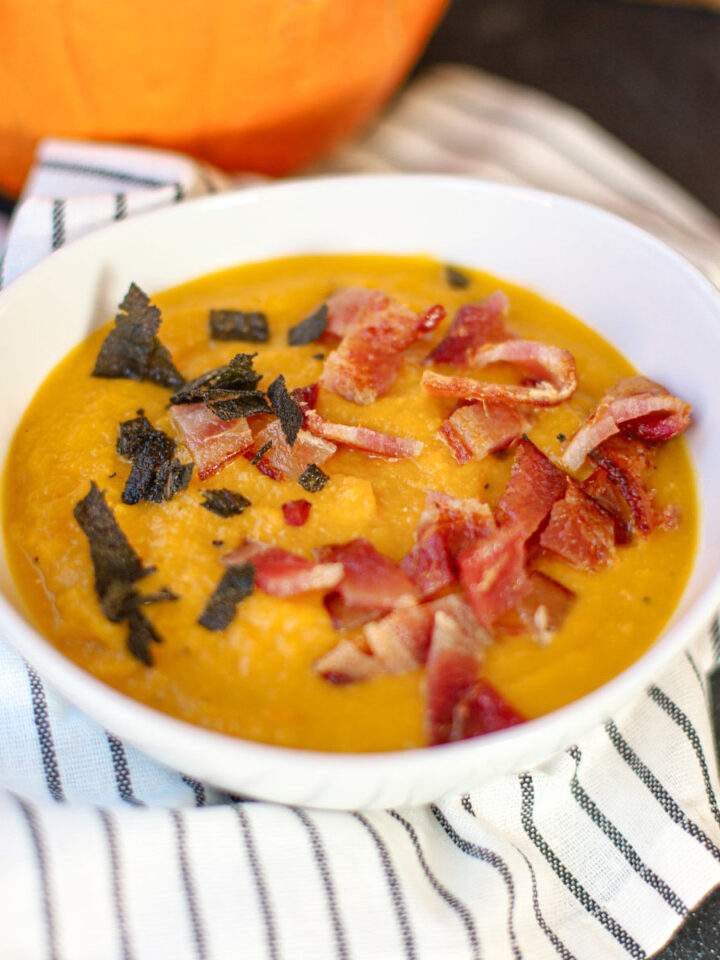
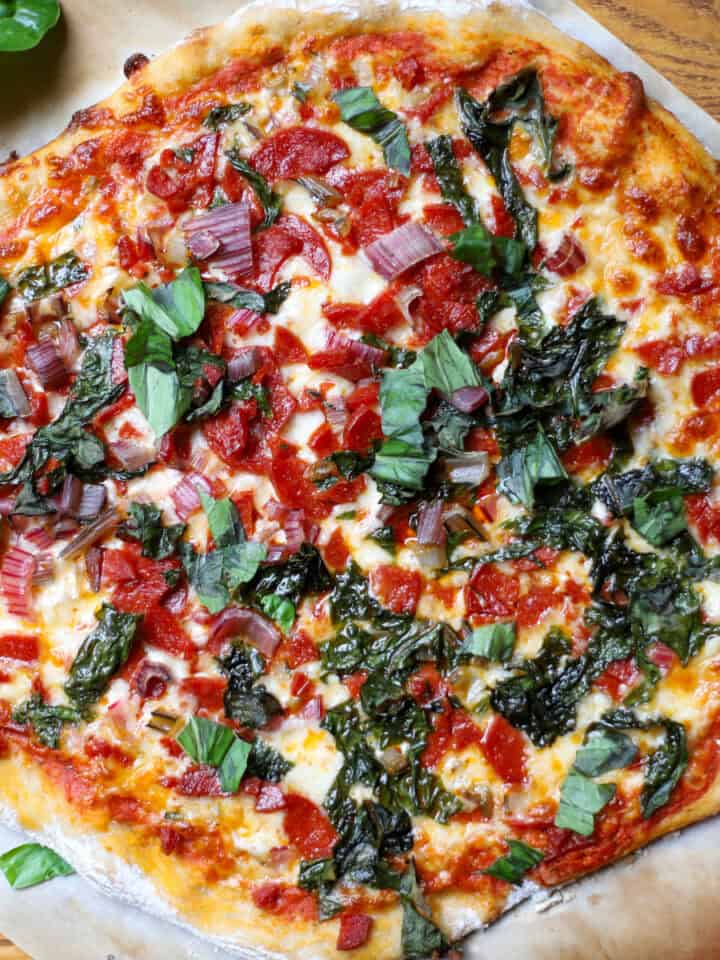
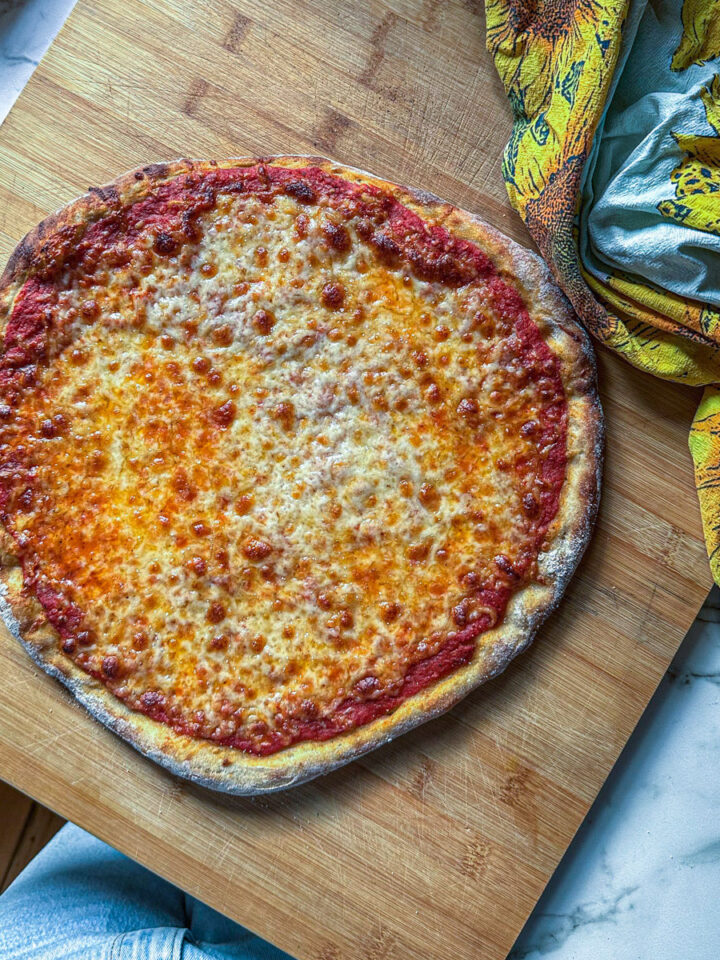
Comments
No Comments